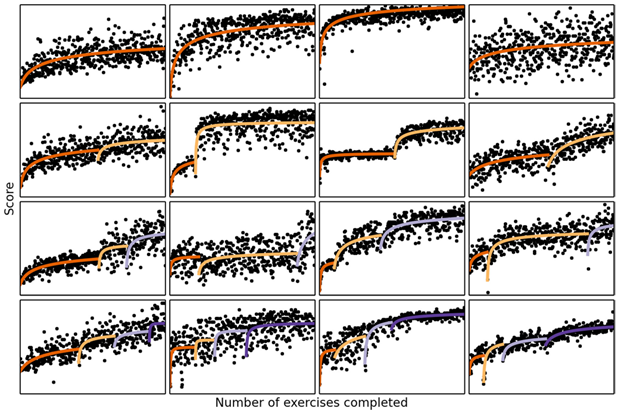Anyone who has ever written a book knows how long and arduous the process can be. Anyone who has authored 2 or 3 books should take justifiable pride in their accomplishments. But I know no one who could conceivably author more than 500 books. It sounds preposterous to even think that this many books might be authored by a single person in a lifetime.
And yet, Isaac Asimov did.
How?
Not surprisingly, self-discipline was a major contributor: It has been reported that Asimov wrote from 7:30 am till 10:00 pm, seven days a week. Few of us can muster that sort of commitment, and anyone who balances a family life with work may justifiably even find it abhorrent.
Nonetheless, Asimov took considerable time to get his first 100 books off the ground, namely 237 months, or around 20 years. (This still equates to 5 books per year or one every 10 weeks.) His fourth lot of 100 books only took a little under 4 years, a five-fold speed-up in writing. (This equates to one book every two weeks.)
Asimov’s achievements are legendary. They also provide a fascinating illustration of the beneficial effects of practice on performance. Asimov said that the more he wrote, the easier it became—the data clearly support this intuition, not just in his case, but in almost any other situation involving the acquisition of a skill.
We get faster and better at pretty much anything with extensive practice. (A point I made recently here, in the context of heritability.)
The details of how we get faster and better, however, have been subject to much fascinating scientific debate and research during the last few decades.
A recent article in the Psychonomic Bulletin & Review by researchers Yoni Donner and Joseph Hardy continues this tradition. Donner and Hardy were particularly interested in whether learning is smooth and continuous, or whether that smooth progress is punctuated by “step changes.” Such step changes might occur when people have an insight during learning, which radically restructures the psychological representation of the task. For example, it has been shown that learning to interact with software frequently involves step changes that are associated with learners’ sudden insight into aspects of how the software works.
Donner and Hardy made use of an online learning environment that contained observations from over 65 million registered users worldwide, some of whom (around 25,000) had participated in more than 500 learning trials on a variety of tasks. For example, learners would be exposed to a stream of symbols and would have to decide whether the current symbol matches the previous one. Symbols might be as simple as circles or squares, or as complex as kanji characters. Another task, called “Word Bubbles”, would require learners to generate as many words as possible from a given three-letter word stem.
The precise details of the various tasks are not relevant for present purposes. What matter is the fact that the large number (25,000!) of available data points provided the power required for the detection of potential step changes in the learning curves. This is tricky statistical issue because quite often smooth curves provide a good (or better) explanation of data that at first glance give the appearance of step changes—it is only with a very large number of observations that identification of step changes becomes possible.
The overall results, presented at the group level (i.e., averaged across subjects) are shown in the figure below.

Each panel in the figure presents a different task (e.g., the “Word Bubbles” task is labeled VF, for verbal fluency). It is clear that learning proceeded smoothly and continuously and that the learning curves were well described by the famous power law of practice: The r2values in each panel refer to the goodness (perfection?) of fit of the power law.
When individual subjects were considered, the picture changed considerably: Across the 4 tasks, only between 14% and 22% of participants were best described by a smooth function such as those above. The remainder exhibited a learning trajectory that included step changes, as shown in the figure below.

The four columns of panels again refer to the 4 different tasks. The rows show sample learning curves for participants who were best described by either a smooth learning curve or by “piecewise” power laws with 1, 2, or 3 breakpoints (rows 2, 3, and 4, respectively).
Donner and Hardy suggest that these discontinuities are quite possibly representative of a broad range of learning situations. Now that such step changes in learning have been reliably observed, all sorts of further interesting questions for research emerge: For example, what triggers a step change? How can one experience an “aha” experience during a “Word Bubbles” task? What exactly are those different representations that seem to be underlying the piecewise learning curves?
Commendably, code and data for this study are available “open-source” to any researcher interested in further study of these issues.
Understanding those step-changes may not turn all of us into an Isaac Asimov, but even shaving 50% off the time it takes me to write my next book would be most welcome.

1 Comment